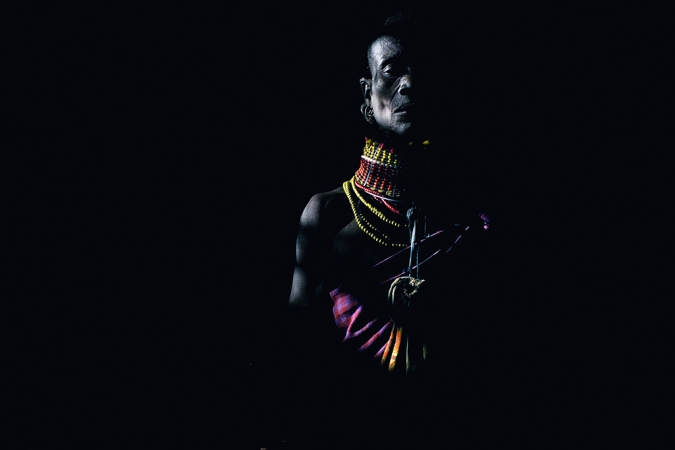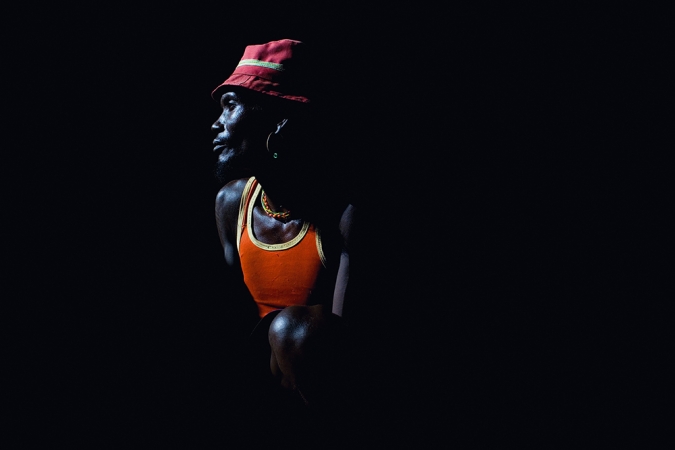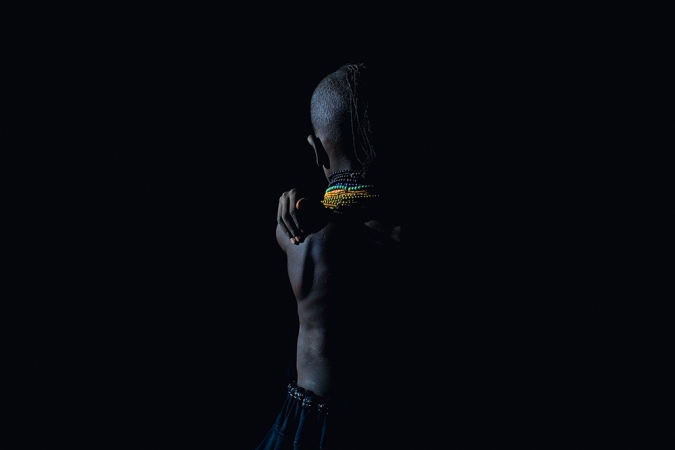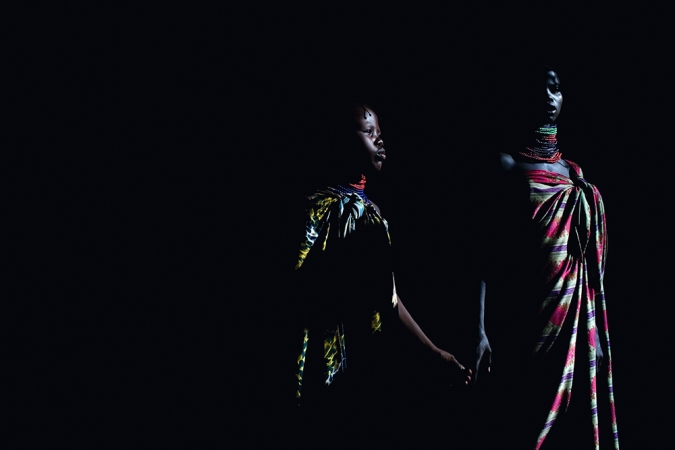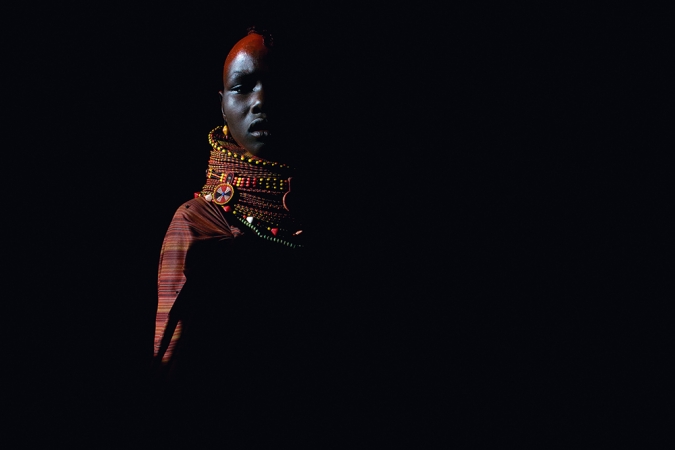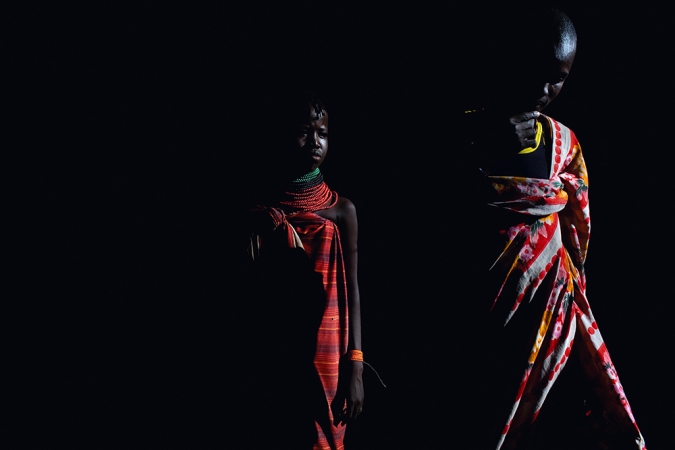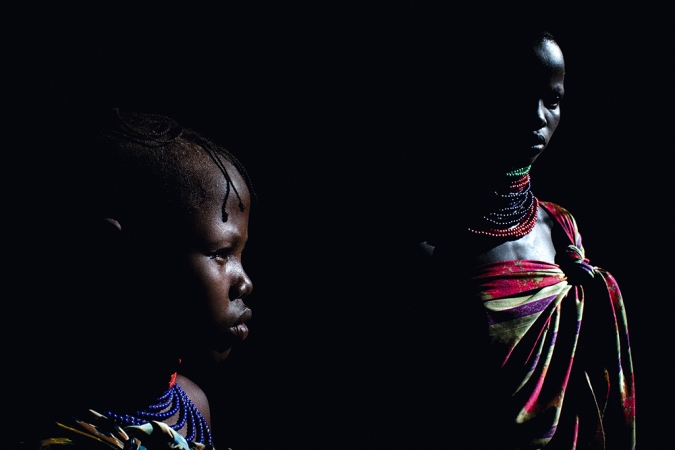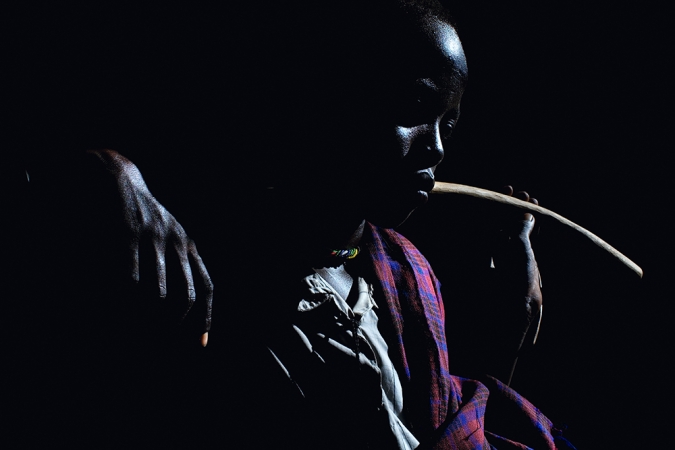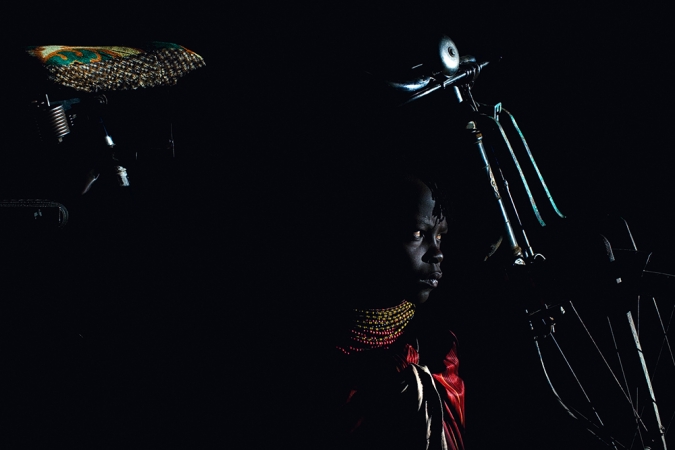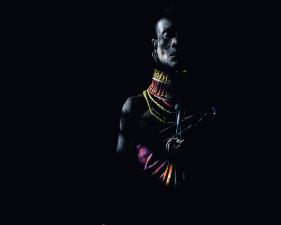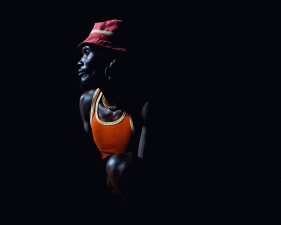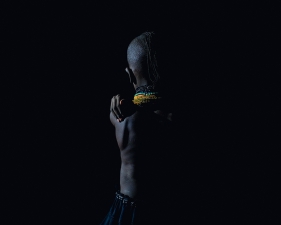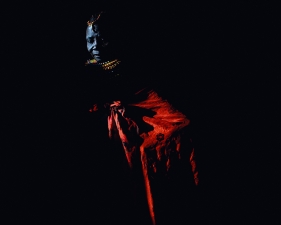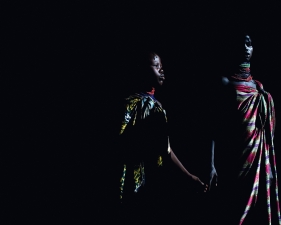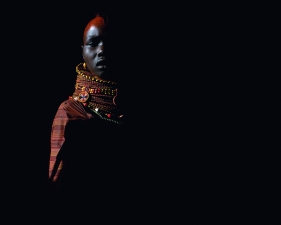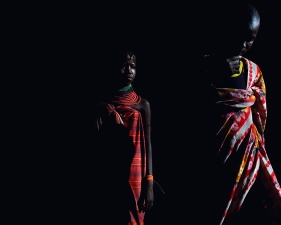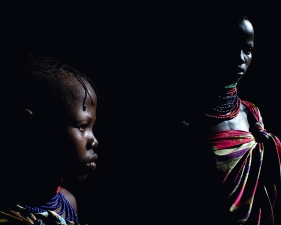Jehad Nga was born in Smith Center, Kansas and raised in Tripoli, Libya, and London. Nga’s work strikes a powerful aesthetic balance between the personal and the political, the emotive and the pragmatic, the humane and the inhumane.
In Turkana, his sublime and tragic portraits of the Turkana tribe in Kenya, Nga uses striking chiaroscuro to document the people and faces at risk of disappearing as a result of drought devastating the Horn of Africa. Nga removes his subjects completely from their environment by photographing them in a freestanding hut built for this purpose. In doing so, he refuses to allow the harsh terrain of the region to become the defining element of his work, but rather forces the viewer to confront the human subject in front of the lens.
The Green Book, a project inspired by the philosophies of Muammar Gaddafi, saw the artist “intercepting” censored images from the internet in Libya, converting them into binary code, and combining them with the code of each chapter of The Green Book. The result is an unsettling, and oddly beautiful group of images created entirely from preexisting data. Each print while visually magnetic for its striking primary palette and digital abstract forms, also asks sobering questions about technology, government and our place in the digital age.
Nga’s photography has appeared in the Christian Science Monitor, Fortune, the Los Angeles Times, the New York Times, the Telegraph, Time, and Vanity Fair, among many other publications. In 2005, Nga was awarded the Picture of the Year International Award (POYI) for his coverage of the Darfuran war and Chadian refugee crisis. He received it again in 2006 for his coverage of Operation Steel in Iraq. In 2005, Nga also received first, second and third places from the Chinese International Press Photographers for his coverage in Uganda, Chad and Darfur, as well as the “Top 30 Under 30” award by Photo District News. His work is included in the Boston Museum of Modern Art, The Elton John AIDS Foundations, Davis Museum, Wellesley, Massachusetts, The DeCordova Museum of Art and been included in the African Biennial held in Bamako, Mali in 2011.




